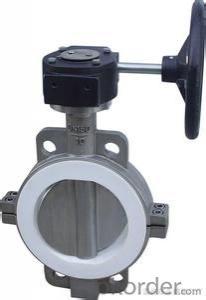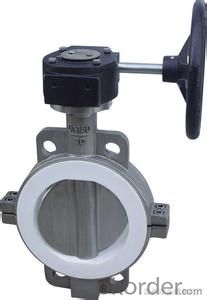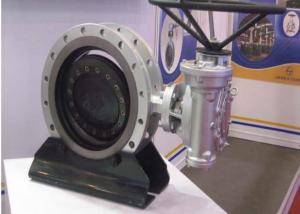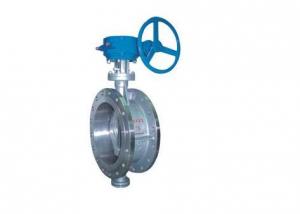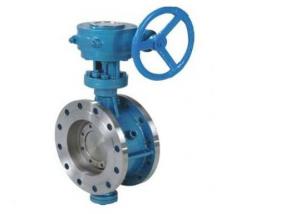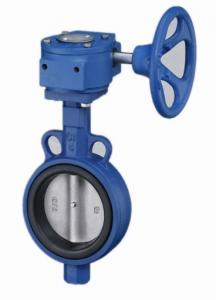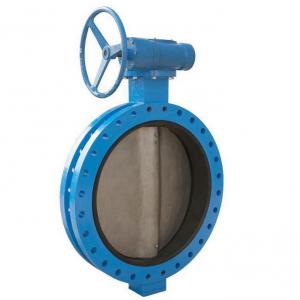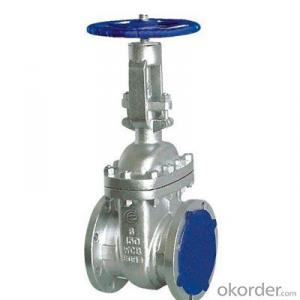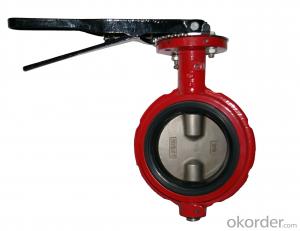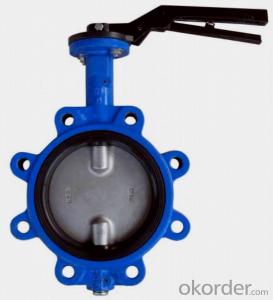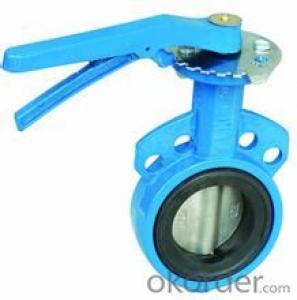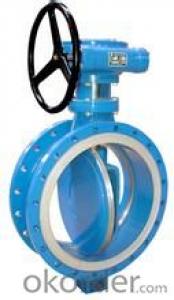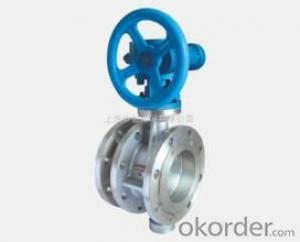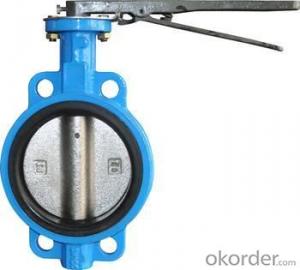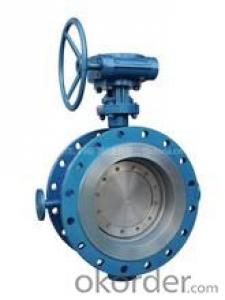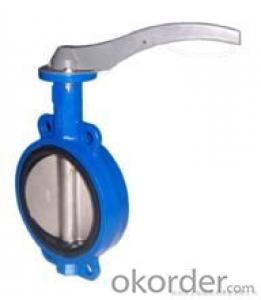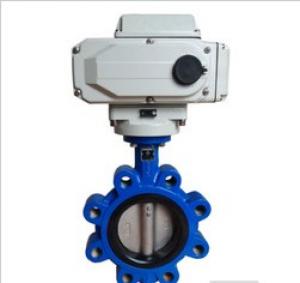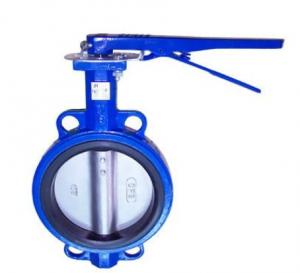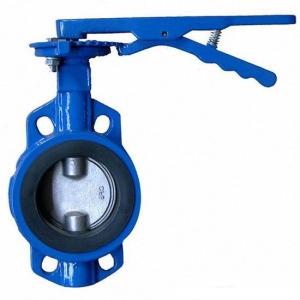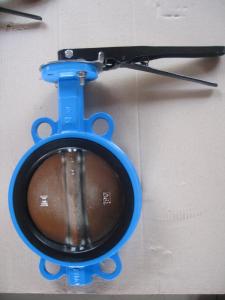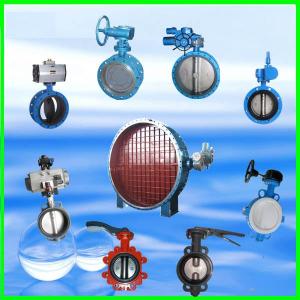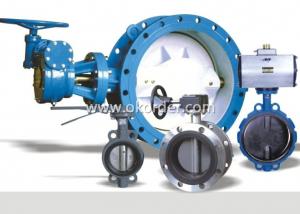butterfly valve PN16Standard Structure: Butterfly Pressure: Low Pressure
- Loading Port:
- Tianjin
- Payment Terms:
- TT OR LC
- Min Order Qty:
- 1 pc
- Supply Capability:
- 9999 pc/month
OKorder Service Pledge
OKorder Financial Service
You Might Also Like
Quick Details
Standard or Nonstandard: Standard Structure: Butterfly Pressure: Low Pressure Power: Manual Material: Casting Temperature of Media: Normal Temperature Media: Water Port Size: DN40-DN1200 Place of Origin: China (Mainland) Wafer type: butterfly valve Packaging & Delivery
Packaging Details: Plactic bag+Paper cover+Plywood cases
Delivery Detail: Within 20 days
Specifications
Wafer type lined butterfly valve
1.Design standard:ISO,BS,API
2.DN40-DN1200
3.PN10/PN16/PN25
4.Center lined disc
Wafer type lined butterfly valve
Technical Data
DN40-DN1200mm PN1.0-1.6MPa
General Design:ISO 5752 / BS 5155 / API 609
Body: Cast Iron, Ductile Iron, Carbon Steel, Stainless Steel
Seat: EPDM, PTFE, NBR,Viton
Stem: Stainless Steel, Steel,
Disc: Ductile Iron with Nickel Coating,Ductile Iron with Nylon Coating, Stainless Stee 304/316l, Alu-Bronze,Duplex steel
Flange Connection:DIN,ANSI,JIS,BS
Product Features
Wafer type flanged body style fit between FF or RF flanges
PTFE bushing ensure the maximum shaft support and centralized alignment
360°polished disc assures positive on-off
Hard-Backed Cartridge seat or Edge-Boot seat
The pin,spline or square connection are all available
Universal ISO 5211 mounting pad.
- Q: Does the wet alarm valve group need to install the signal butterfly valve?
- Wet alarm valve at the front of the signal butterfly valve with the main floor of the main role of the butterfly valve, first, maintenance, and two is the prompt sprinkler system, there is a signal butterfly valve closed, should be repaired as soon as possible.
- Q: I got my timing belt done on a 1999 Civic Si on September 26 @ 113,699 miles. at 116,9xx miles I bent a valve on my third cylinder. How likely is it that the timing belt is the reason why this happened? I heard that if the timing belt is a tooth or so off, it could bend a valve. So is it likely that this could have happened? Anyway to check?
- COMPRESSION TEST OR CHECK ALL TIMING MARKS TO SEE IF THEY ARE IN ORDER
- Q: 16 inches below the choice of electromagnetic valve can be the same, it turned out to be DN200 election 1/4, and now there are DN350 can also use this? With it, limiter, pressure relief valve, locator model will change?
- This is our company's products in Pucheng clean energy Co., Ltd. successful use case, if you need case details, you can give me a QQ number, I sent you. In addition, I suggest you add a pneumatic control valve, so that the safest, no map, I can give you. Saved is to look at the project site, if the north, the electromagnetic valve is recommended to use the 1/2 aperture, and a gas control valve or 1/4, it can guarantee the opening speed of the valve, special attention is on the use of the electromagnetic valve chain, this is very important, I will be the general experience specific issues to deal with specific, can not copy blindly, in most cases, this is no problem. And 1/4 also to see traffic, is also 1/4 solenoid valves, flow valve with big caliber is not the same, is not the same, the 1/4 path from the 2mm-12mm range, the CV value is small, about 0.1, with a large amount of 1.2, has big gap, valve opening time is also a great gap, to distinguish between the.
- Q: What is the difference between turbine butterfly valve and flanged butterfly valve?
- Worm gear flange butterfly valve, also known as worm gear flange plate valve, is a simple structure of the control valve, but also can be used for low pressure pipe medium switch control. Butterfly valve refers to the closure of parts (valve or butterfly plate) as the disk, around the valve shaft to achieve rotation and closing of a valve, the main cut off on the pipe and throttling role. Butterfly valve headstock is a disc shaped disc, in the valve body around its own axis of rotation, so as to achieve the purpose of opening or closing or regulation. Butterfly valve used in furnace, coal gas, natural gas, liquefied petroleum gas, city gas, hot and cold air, chemical smelting and power generation environmental protection engineering system, conveying a variety of corrosive and non corrosive media pipeline, used to adjust and cut off the media flow.Butterfly valve structure is simple, small size, light weight, only by a few parts. The utility model can be rapidly opened and closed only by rotating 90 DEG, the operation is simple, and the valve has good fluid control characteristics. Butterfly valve plate installed in the direction of the diameter of the pipe. In the butterfly valve body cylindrical channel, the disc shaped butterfly plate revolves around the axis, the rotation angle is 0 degrees ~90 degrees between, when rotates to 90 degrees, the valve opens the card completely. When the flange butterfly valve is in the fully opened position, the butterfly plate thickness is the only resistance when the medium passes through the valve body, so the pressure drop produced by the valve is very small, so that the flow control characteristic is better. Butterfly valve with bullet sealing and metal sealing two seal type. Resilient sealing valve. The sealing ring can be mounted on the valve body or attached to the periphery of the disc.
- Q: I want to switch off the water in the bathroom only due to replacing sink taps, will water still come out of the pipe if i turn the stop valve
- Assuming that the stop valves are good, turning them off will stop the flow of water to the sink taps. To test them, turn on the water faucet at the sink, then turn off both stop valves. The water should stop coming out of the faucet. If it continues to drip, the stop valves are defective and should be replaced when you do the job. If this is the case you'll have to shut off the main water valve or a valve upstream of the stops to replace them. Good Luck
- Q: For whatever reason, Mazda has made it next to impossible to change the PCV valve on the 929. I'm going to have to pull off the plenum and the passenger's side valve cover to replace a $2.00 PCV valve. Before I get too involved, I need to know the torque specs for the valve cover. Also, any other tips on this process would be greatly appreciated. Can I reuse the old valve cover gasket if it's still in good shape? Should I use any kind of sealant in addition to the gasket when I put it all back together? Thanks in advance, by looking at this motor, I can tell I'll have my work cut out for me (for a friggin $2.00 PCV valve, it's usually SO simple!). Like I said, any and all help is greatly appreciated.
- you do not torque valve covers down, buy a new gasket , I would get a good quality rubber one and some blue rtv sealer, clean any crap off the valve cover no glue no bits of gasket nothing, same thing on the head surface, glue the gasket on the valve cover, let it set, then carefully put it on, start with the bolts in the middle and work out finger tight all of them, then just snug the bolts down, dont crush the gasket, you can also use a light duty locktite to hold them in place, and often times old valve covers are warped, it is too your advantage to make sure its as flat as you can get it, or spend a few bucks a buy a new one. your choice, but snug the nuts down good with out crushing and bending the thin sheet metal of the valve cover.
- Q: What is the electric butterfly valve? Please, great God!
- Therefore, this butterfly valve is the best matching product of automatic fire sprinkler system. The structure characteristics and working principle: the top design electrical device the butterfly valve of the worm and the worm gear driving device, and with the stem straight connecting transmission. In the closed precision electromechanical device, opening mechanical instructions and imported electrical components and parts with rust proof valve.
- Q: Have an iron block, aluminum heads, solid roller lifters, Jessel rocker shafts, what should my valve clearances be cold, and hot??
- Because you apparently have a built engine here rather than a factory assembly which simply has solid lifters, and the data you have is either inconclusive or conflicting then I will recommend the following procedure: Assemble them cold and adjust to Intake .010 and exhaust .020. After firing up the engine, adjust the carb, if it is so equipped, to a smooth rich idle and run it in for a couple of hours mixing idling with moderate load and a few full throttle pulls through 2nd gear to seat the rings. Bring it back into the shop good and hot and set the valve clearances at .008 intake and .016 exhaust hot. After adjusting the valves readjust the idle to 700 RPM and set the timing. initially set the timing at about 2 degrees BTDC until you hav run in the engine, If you are without clear specifications for timing use a vacuum gauge and play with it between 2 and 10 degrees BTDC with the vacuum advance disconnected and plugged, you are looking for the highest vacuum at idle as a starting point. Run it hard including lugging it in high gear at around 2500 to 3500 rpm at or near full throttle, if you are getting spark knock back it down 2 degrees at a time until it does not knock when lugged. If you get no spark knock when lugging it you might try advancing the timing 2 degrees above the vacuum indicated optimal setting but do not go beyond that point. After setting the valves and timing readjust the carburetor to the best lean idle and set to 650 to 700 rpm depending on where it feels comfortable. In the old days a lot of this was done totally by ear - hence the term engineers. Today I think most holders of that revered title do not have a clue where the term came from.
- Q: My bike has now 6200 miles on the odometer. The manual says that a valve adjustment should be performed every 6000 miles. But the bike runs fine. Can I just have the valve checked or should I have them adjusted even though the bike is fine? What will happen if I just keep riding it?
- In reality, lots of bikes go their entire lives without a valve adjustment. In my opinion that is a great way to ruin a bike though. They have a maintence schedule for a reason. If a valve isn't seating, it can hurt performance and the valve will not be able to transfer heat to the head. That can burn a valve and cause detonation. You have to check valves to adjust them, and the labor for just checking will be nearly the same or identical to doing the adjustments. I do all my own wrenching, so money isn't really an issue, but if I were you, I would just bite the bullet and take it in.
- Q: I have a good set of #142 Pontiac heads with small diameter valves. I want to have the heads enlarged to accept the larger Pontiac valves, and I have the larger exhaust valves out of #13 heads and the larger intakes from 6X8 heads. The valves appear ok and shiny on the stems
- Roll the valves by the stems on a perfectly flat table. If there is no wobble, your valves are most likely not bent. Take them to a machine shop and have them checked for imperfections and reground and they'll be good as new.
Send your message to us
butterfly valve PN16Standard Structure: Butterfly Pressure: Low Pressure
- Loading Port:
- Tianjin
- Payment Terms:
- TT OR LC
- Min Order Qty:
- 1 pc
- Supply Capability:
- 9999 pc/month
OKorder Service Pledge
OKorder Financial Service
Similar products
Hot products
Hot Searches
